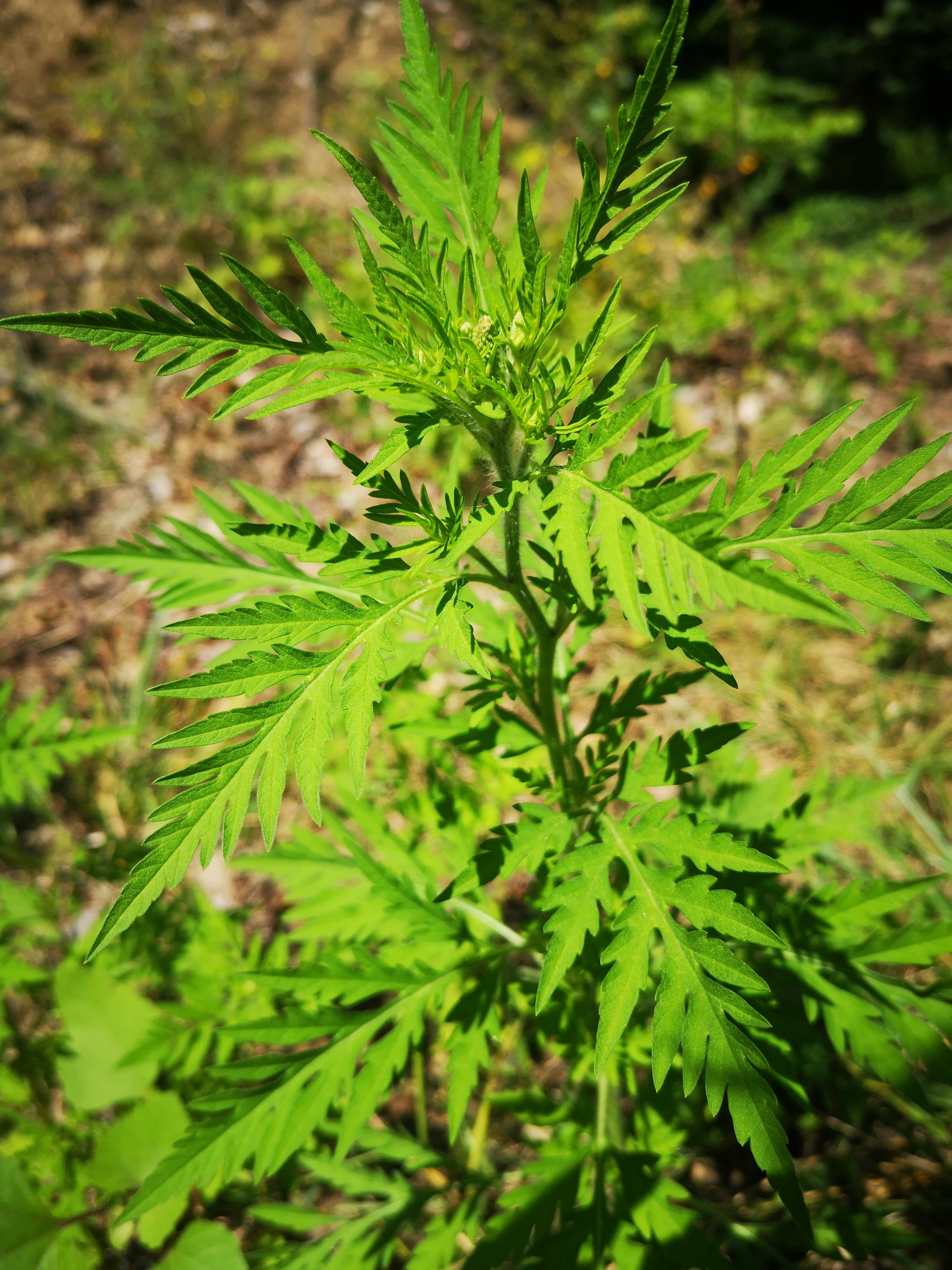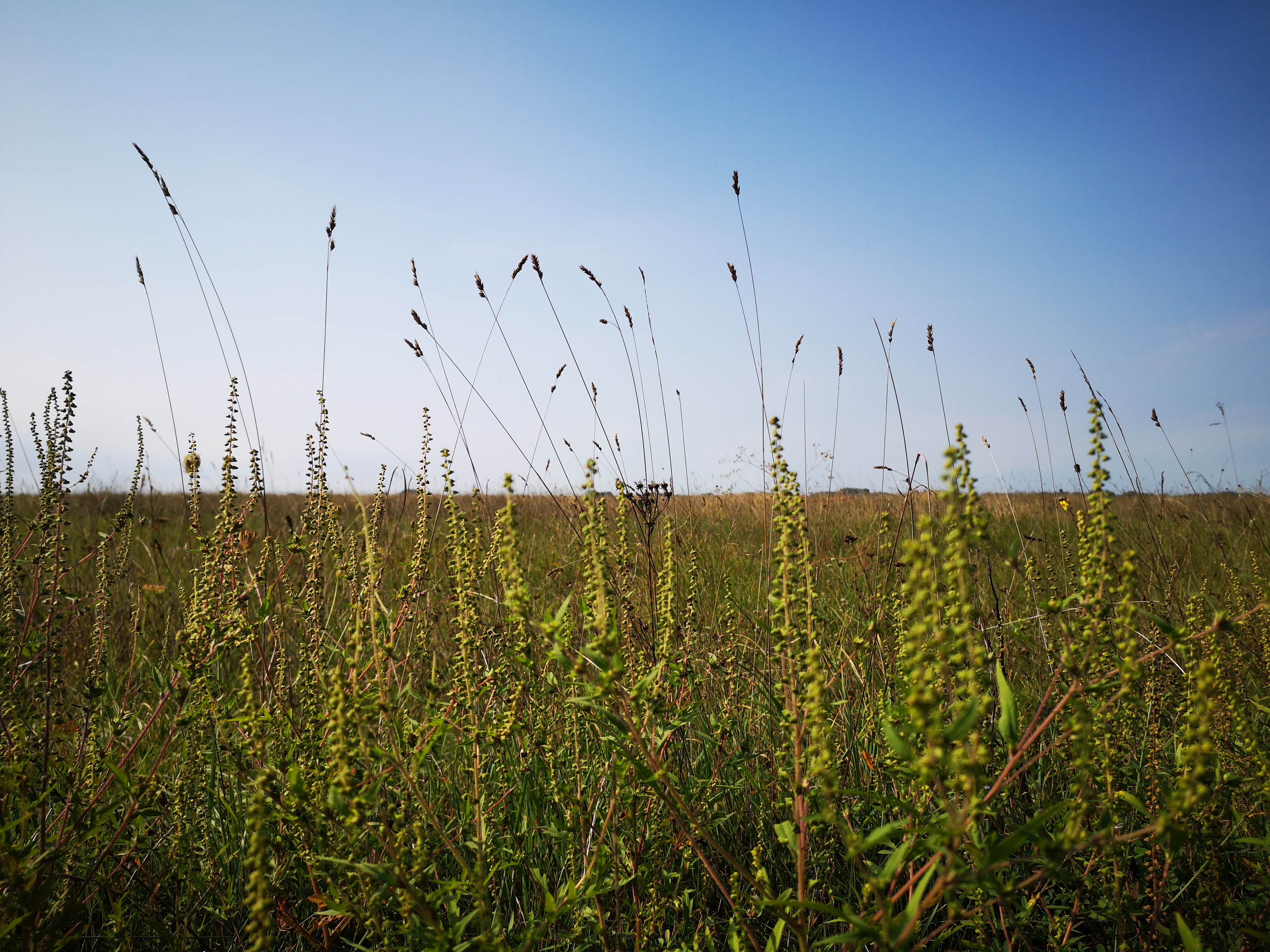Sava TIES - GET TO KNOW THE INVASIVE ALIEN PLANTS - Ragweed
11-09-2020
Ragweed is an annual herbaceous plant that grows from 20 to more than 150 cm in height. Its root is shallow and branched, and the stem is erect and quadrangular with hairs which are rough to the touch. The 5 to 10 cm long and deeply feathered leaves grow opposite each other. The male flowers produce huge amounts of pollen, and pollination is mainly through the wind. It produces between 3,000 and 60,000 seeds a year, which are spread either by wind over short distances, or through birds and mammals' fur and over longer distances. The plant origins from North America and Mexico.

Photo 1. Ragweed plant (by I. Sučić)
It is believed to have been first introduced to Europe in the mid-19th century and has since been accidentally introduced to various parts of Europe as an unwanted component of cereal and grass seeds. This is a plant typically found in neglected and disturbed habitats, mostly those under human influence. Wherever there is a bare surface ragweed will soon appear (for example, in the first year after abandoning agricultural fields). It can be found along settlements, roads, construction sites, railways, on agricultural land along the edges of crops and other similar places.
Within its natural range it is used in medicine. Its juices are used to stop local bleeding and to treat indigestion. However, it should be emphasized that the damage it inflicts is far greater than the potential benefits that have not even been sufficiently researched. For example, available data from neighbouring Hungary show that ragweed was present on about 418,000 hectares in 1990, 2.9 million hectares in 2001, and in 2008 ragweed could be found on 5 million hectares out of a total of 6.2 million hectares of agricultural land in Hungary. The economic damage it causes in Hungary is estimated at around EUR 100 million. One hectare covered with ragweed annually produces about 66 kg of pollen per vegetation season.

Photo 2. Ragweed seeds (by I. Sučić)
It has negative impact on biodiversity because it significantly slows down the regeneration of natural habitats and threatens rare plant species and many natural plant communities that grow in the same habitats.
How to remove it?
When ragweed is found in small areas, it is recommended to pluck whole plants before they can produce seeds. In organic farming, one should undertake every effort to sow the plants so that they germinate at least 10 days before ragweed. On large areas, methods that are considered good are using herbicides or ploughing to a minimum depth of 10 cm.

Did you know?
Ragweed pollen is considered one of the strongest allergens, and one plant can drop over a million pollen grains a day.
News in national languages:
Croatia - Zeleni prsten Public Institution of Zagreb County or Lonjsko Polje Nature Park Public Institution
Slovenia - Public Institution Ljubljansko barje Nature Park
Bosnia and Herzegovina - Center for Environment or Public Company National Park "Una"
Serbia - Institute for Nature Conservation of Vojvodina Province or Nature Conservation Movement Sremska Mitrovica or Public Enterprise „Vojvodinašume“
Germany - EuroNatur
